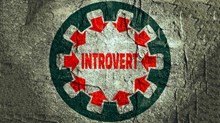Leaving and Cleaving

Carl and Sarah couldn't wait to get married. They started dating their junior year of college after meeting at a school function. They exchanged numbers, made it past the initial awkward first contacts, and went on a date. The first date went so well that they agreed to meet the next morning for breakfast and spend the day together. And that was it for both of them. They had never connected like that before with a member of the opposite sex, and for the rest of their college term, they were rarely apart.
Carl popped the question at their favorite picnic spot one warm spring afternoon of their senior year, and Sarah enthusiastically said, "Yes!" They had the support and blessing of their respective friends and families. Carl, however, was the first child from his family to get married, so neither Carl nor his parents ever had to navigate a leaving like this one. The leaving home for college marked a transition in life. The leaving home for marriage, however, marked an ending.
Sarah, by contrast, was the youngest child in her family, so her parents had been through this marriage business before. They chose to see marriage not as an ending but as an addition. Many parents romanticize the marriage of their children in this way by seeing marriage as adding to an already existing family structure. This perspective, while seemingly kind and accommodating, actually sets the new couple up to put off the necessary work of recognizing, naming, and leaving behind limiting and unhealthy family of origin patterns.
The family you grew up in is your family of origin. And from your family of origin you learn how to see yourself, others, and God. Your early experiences, daily routines, and unique family structure shape your relating patterns and beliefs about how life and relationships work. These formative early years shape and mold our answers to critical questions like: Is the world a safe place? Are people basically trustworthy? Am I loved for who I am or for what I do? Can I make a mistake and still experience being valued? Will someone be there for me when I call? These and many similar critical questions get answered by your family of origin. The answers to these questions then shape your personality, your view of relationships, your insecurities, how you experience love, and how you approach life.
In addition to shaping our relational landscape, your family of origin also created a role for you to play. The roles you played in your family of origin always show up and influence your relationships today—especially your marriage relationship. Your family of origin has a powerful influence on your development!
Because God understands how powerfully your family of origin influenced you, he designed marriage in part to confront and address those early messages, patterns of relating, and beliefs we carry into adulthood. And regardless of whether you think your family of origin was fantastic, just okay, or horrible, your first job as a married adult is to leave it.
Leaving your family of origin doesn't mean turning your back on your parents, or blaming them for all your struggles, or forgetting everything you learned. Rather leaving, according to the Genesis 2:24 understanding of the term, entails fully transferring your loyalties from your family to your spouse. Transferring loyalties involves becoming aware of and naming your family's influence on you and then exercising your God-given ability to challenge these shaping influences and create something new.
Leaving sounds like it would be a relatively easy step to take. You simply do what is necessary to move out and establish a residence somewhere else. Actually, it's a bit more involved than that. Remember, leaving means to leave all past loyalties. Toward that end, leaving implies breaking the bond from everything and everyone that has at one time in your life had a hold on you. Were you a daddy's girl? Is there a past addiction? Are you experiencing an ongoing struggle with self-worth? Are there body image issues that you carry into your marriage from your youth?
If something has a hold on you, you are struggling with a loyalty issue, and God desires you to be free from it so you can more fully engage with your spouse. When you have unresolved family of origin issues you are actually still tethered to them, and your loyalties are, in part, still with your family.
With this more robust understanding of leaving, it becomes clearer that leaving is a process, not simply an event. The leave, cleave, and weave pattern for marriage outlined in Genesis 2:24 is to continue throughout the course of a relationship. Consequently, a helpful question to frequently ask yourself is: to whom or what am I most loyal today, this month, this past year?
Whatever your situation and whatever you are still held by, the good news is the more you become aware of and work through these wounds and roles, the more freedom you will experience. And as you experience more freedom, you can more fully align your loyalties to your spouse and improve your ability to love him as God intended. God invites you to name what entangles you—to name your shame, fear, and self-righteousness—and then to take steps to turn away from it, to stop allowing it to have a continual hold over you. Here are two helpful tools you can use to identify and address your family of origin issues:
1. Connect the dots
Connect the dots means to identify and understand how the beliefs, roles, and patterns from your family of origin entangle you in your current relationships. For example, if you can identify that you came from a family that exhibited frequent anger outbursts or verbal abuse, and in response to this environment you took the role of the "good girl" or "compliant girl" to cope with the anger, you can begin to look for similar dynamics in your marriage. This family of origin pattern most likely shows up in your marriage as a dynamic of avoiding conflict. When tempers rise you may experience significant fear because the elevated voices signal disappointment, possible rejection, and feelings of abandonment. Further, this pattern of coping then leads to feelings of worthlessness and isolation in your marriage, which in turn lead to a lack of intimacy and connection with your spouse. Connecting the dots allows you to see how family of origin patterns play out in your relationship today.
2. Breaking the chains
Breaking the chains is taking the information uncovered in the connecting the dots step and using it to begin to break the patterns you discovered. Connecting the dots uncovers the patterns that prevent you from being free from the wounds and the unhealthy ways of relating you learned when you were a child. Breaking the chains then involves using the information to end these patterns of disconnection. Your tools for change in this step are experiencing, grieving, and challenging. Take the time to experience your feelings around these patterns, grieve the hurts you encountered, and challenge the incorrect message of the wounds you received.
Using the above example of a pattern of being the "compliant girl" or "good girl," breaking the chains helps you get in touch with the feelings of being the compliant spouse and how that hurts or frustrates you. Then, take the time to grieve and feel the loss of connection this pattern creates within your marriage. Finally, have a discussion with your spouse about this pattern in your marriage. Challenge your usual role by stating your desire to change your role of compliant spouse and speak up about how this pattern diminishes your experience in the relationship and limits intimacy.
To help get you started on this process of leaving, answer and reflect on the following questions:
- What role did you play in your family of origin? (For example, quiet and compliant one, counselor, trouble-maker, responsible one, sick one, wife to your father, truth-teller, lost child.) Write about a childhood situation that shows the role you and others in your family played. Share this with your spouse, a trusted friend, or therapist for feedback.
- What wounds did you experience as a child? Explain this to yourself and to your thought partner.
- What false messages do you struggle with today based on your past? (For example, I'm not important; others' needs are more important than my own; men are more sexual than women; I need to diminish or limit myself so others feel okay.)
- How do you unintentionally look for evidence to support your family of origin false messages in your marriage? How do you invite your spouse to see and treat you that way?
These questions can be difficult to work through, especially if you've never delved into family of origin issues before. The goal is not to blame your parents or siblings for wounds or painful experiences and memories, but to identify the powerful ways in which they shaped us and continue to affect your marriage today. If you and your spouse get stuck or mired in conflict as you try to uncover the answers to these questions, consider seeking counseling from a trained therapist.
Steve Mesmer received his master's degree in Counseling Psychology from Trinity International University. He is a licensed clinical professional counselor (LCPC) specializing in teaching and counseling couples in marital restoration. He also has extensive experience and training in men's issues, anxiety disorders, OCD, divorce recovery, and spiritual formation. He and his wife, Cyndi, cofounded The Art of Living Counseling Center in Crystal Lake, IL, and together they also parent five children.
Read more articles that highlight writing by Christian women at ChristianityToday.com/Women
 Read These Next
Read These Next

 Why I Don't Have Kids . . . Yet3 reasons I've held off so far
Why I Don't Have Kids . . . Yet3 reasons I've held off so far
 We Never Loved Each OtherWe never even really liked each other. How would our marriage last?
We Never Loved Each OtherWe never even really liked each other. How would our marriage last?









 Homepage
Homepage